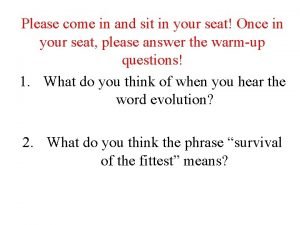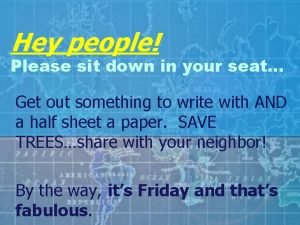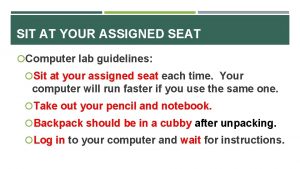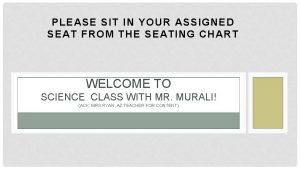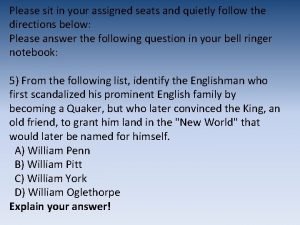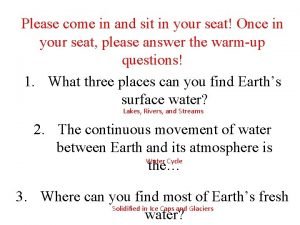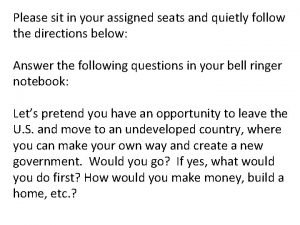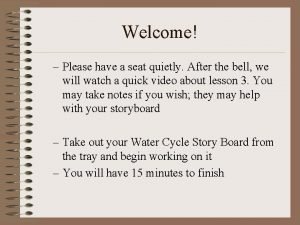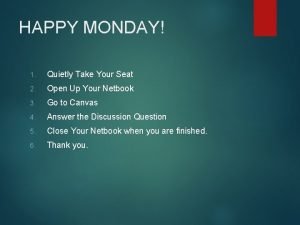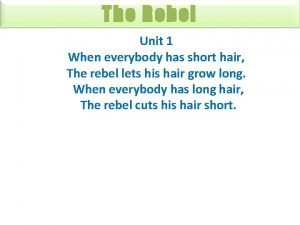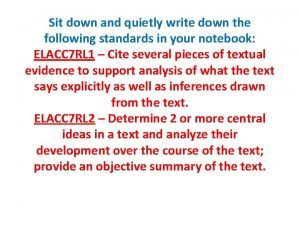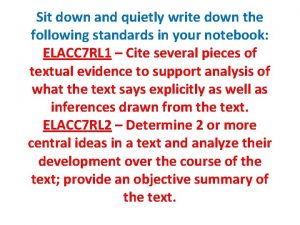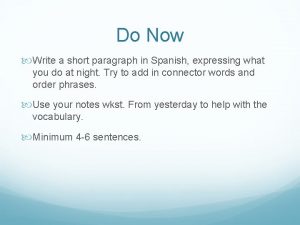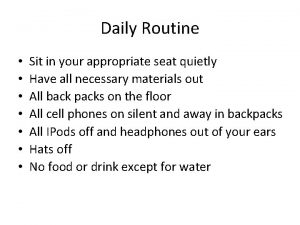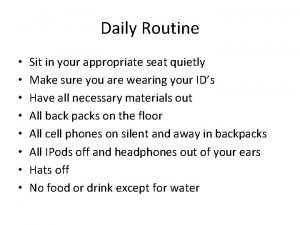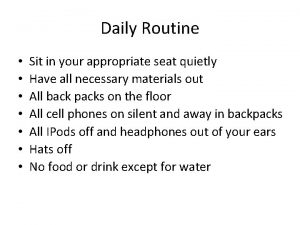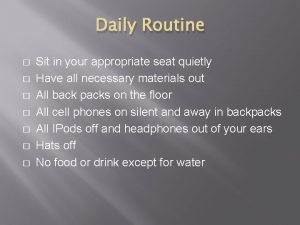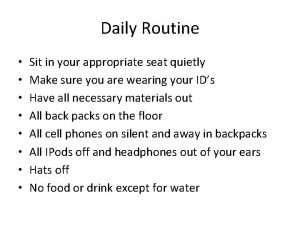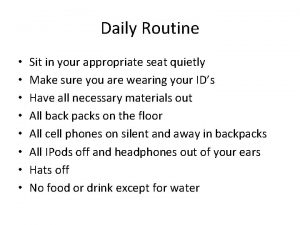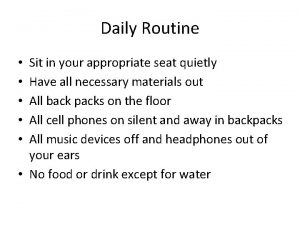Daily Routine Sit in your appropriate seat quietly














- Slides: 14

Daily Routine Sit in your appropriate seat quietly Have all necessary materials out All back packs on the floor All cell phones on silent and away in backpacks All IPods off and headphones out of your ears No food or drink except for water

Bellwork How does earthquake depth show the relationship of subduction? Describe subduction in your own words.

Plate Tectonics: Plate Boundaries

I will be able to… Explain how the modern Theory of Plate Tectonics came about with Hess’ and Wegener’s lines of evidence Elaborate about the similarities and differences of oceanic and continental crust Describe the movement of each plate boundary Diagram the three types of plate boundaries

What is subduction? Subduction is recycling of Earth’s crust Known as slab pull One tectonic plate slide under and down underneath another tectonic plate Caused by density differences Denser plate sinks or subducts under the less dense plate

Earth’s Crust Oceanic Makes up the ocean floor Composed of pillow basalts (rock type) Thin – 5 km thick Density – 3. 0 g/m. L Continental Makes up the land/continents on Earth Composed of mostly Granites Thick – 20 -70 km thick Density – 2. 7 g/m. L

Important Layers for Plate Tectonics Two sub-layers that drive plate tectonics: Lithosphere Asthenosphere Lithosphere: Crust and rigid upper most part of the mantle = tectonic plate Asthenosphere: plastic layer within the upper mantle that contains the mechanisms to cause plate movement

How did the Theory of Plate Tectonics come about? Merger of all evidence: Wegener’s continental drift hypothesis evidence Hess’ sonar scans, core sample ages, paleomagentism to form sea floor spreading Geographic evidence: mountain ranges, volcanoes, island arcs, trenches, MOR’s Earthquake data

Scientists started plotting the location of earthquakes around the world Next, Scientists began plotting the location of volcanoes around the world As they did this, a pattern began to emerge that showed Once again, a pattern emerged cracks in the earth’s crust, revealing plate boundaries locations = Earthquakes = Volcanoes

The 3 Plate Boundaries Divergent-plates are pulled apart Convergent-plates collide Transform-plates slide past each other

Plate Boundary Types On the worksheet perform the following tasks: Diagram the types of plate boundaries Describe the motion of the plate boundaries Describe the types of crust involved with the plate boundaries Identify what features (geographic) form due to the different plate boundaries Identify at least two real-life examples of the plate boundaries

Convergent Boundary

Oceanic – Oceanic Subduction of two oceanic plates Denser older oceanic plate subducts under younger less dense Lots of volcanism and earthquakes Island Arc and deepest trenches are formed Examples: Aleutian Islands and Japan

Continental – Continental Collision When two continental plates/crust collide Both plates have similar densities Land buckles and pushes up Push up motion of land = uplift Lots of heat and pressure change the rocks • Forms mountain ranges and many Earthquakes • Example: Himalayas
 Come in and ....................... a seat!
Come in and ....................... a seat! Hey hey people
Hey hey people Sit in your assigned seat
Sit in your assigned seat Sit in your assigned seat
Sit in your assigned seat Sit in your assigned seat
Sit in your assigned seat Please come in and take a seat
Please come in and take a seat Sit in your assigned seat
Sit in your assigned seat He took his seat quietly
He took his seat quietly Subordinating conjunctions awubis
Subordinating conjunctions awubis Britney spears characters
Britney spears characters When everybody wears a uniform the rebel dresses in
When everybody wears a uniform the rebel dresses in Sit down quietly
Sit down quietly Sit down quietly
Sit down quietly Sit ins
Sit ins How to write a paragraph in spanish
How to write a paragraph in spanish
